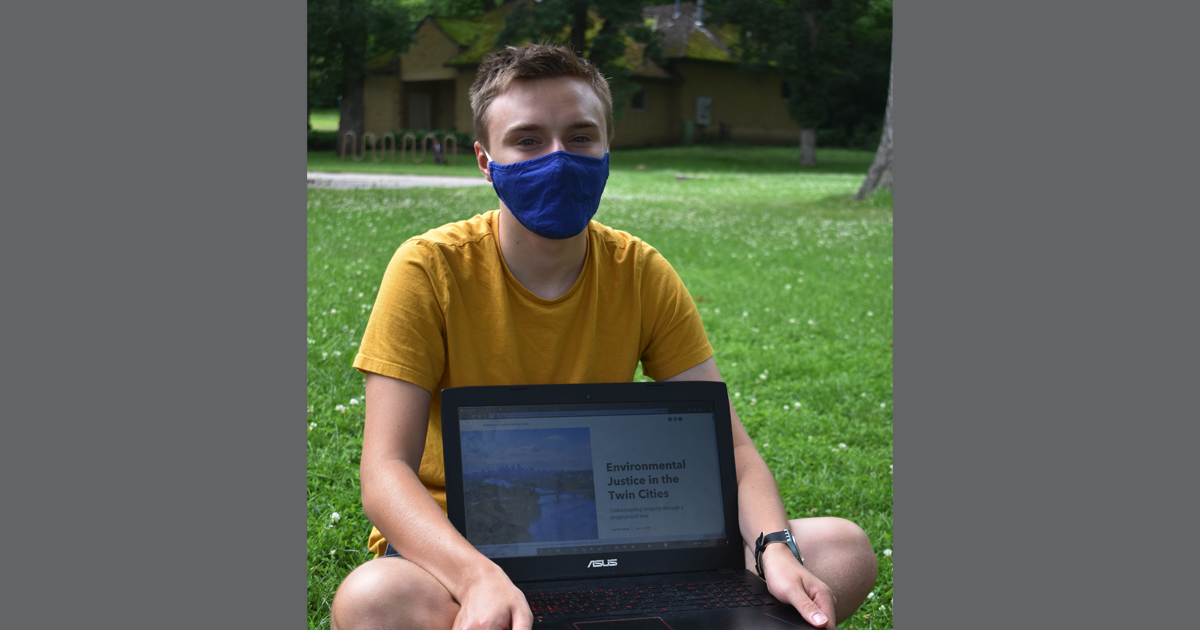Mapping for environmental justice in the Twin Cities
This is a guest post from Curran, a Youth Empowerment Program (now the Environmental Stewardship Institute) participant. Curran wanted to visualize environmental contamination and inequities across the Twin Cities, and compiled a series of maps to investigate.
* * * * *
For my final project with the Youth Empowerment Program, I chose to focus on environmental justice because environmental injustices affect Minneapolis and St. Paul so directly.
Our environment, whether natural or more urban, affects our health, economic mobility, food access, ability to travel and much more. I found environmental justice particularly fascinating as it meets at the intersection of science, activism and governmental policy. I noticed that it was difficult to find specific information on environmental justice issues affecting different neighborhoods. I aimed to provide concrete, data-based information for individual areas.
I put together and compiled maps to compare measures of quality of life and environmental quality to factors such as the income or racial makeup of neighborhoods. You can explore the full finished product below.
My process
I used Geographic Information System (GIS) software to compile mapped data from various sources and then combined that with information from research as well as an interview with Colleen O'Connor Toberman, the Land Use & Planning Program Director at FMR.
Sharing my findings: Mapping as a tool for understanding
I made a webpage to present the maps I compiled. You'll find a definition of environmental justice and historical context on the topic in the introduction before my interactive maps.
Though the data I used is very large scale, looking at it geographically allows the numbers to be interpreted in an easily understandable way. Maps have the advantage of familiarity; viewers can see where issues are occurring in the neighborhoods around them and connect knowledge of environmental justice issues into their daily surroundings.
At the bottom, you can find resources on how to take action against environmental injustices.
While I want to provide information about the large-scale principles of environmental justice, my main goal is to send viewers off with knowledge of what issues affect different parts of their communities, and with resources to begin to take action against environmental injustices.
Visit my webpage or see above to view the final product, and explore maps of environmental justice in the Twin Cities.
* * * * *
What's the Youth Empowerment Program?
FMR created the Youth Empowerment Program (now the Environmental Stewardship Institute) to address the gap between environmental education and a career path in the environmental field.
While many high schools offer green teams or eco clubs, young people often don't have many chances to explore what a real career in the environmental field would look like. As an environmental organization, we wanted to use our resources to help address that gap, in turn growing a stronger, more equitable movement.
We provide paid job experience and foundational learning to a group of students curious about environmental career paths. Our hope is that, by completing the program, participants are more prepared for continued schooling in environmental subjects and have real work experience to lean on for future job opportunities in the field.
